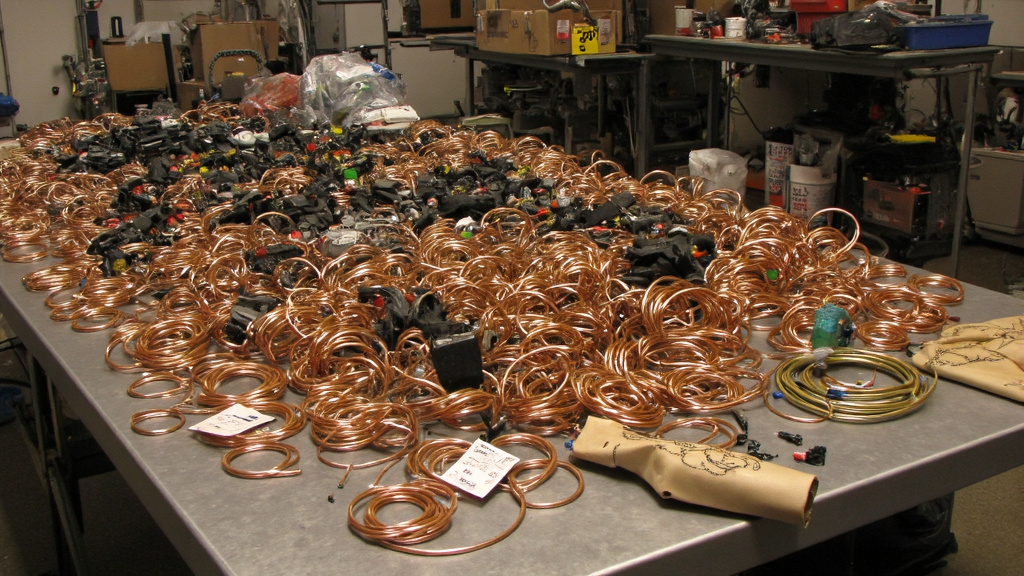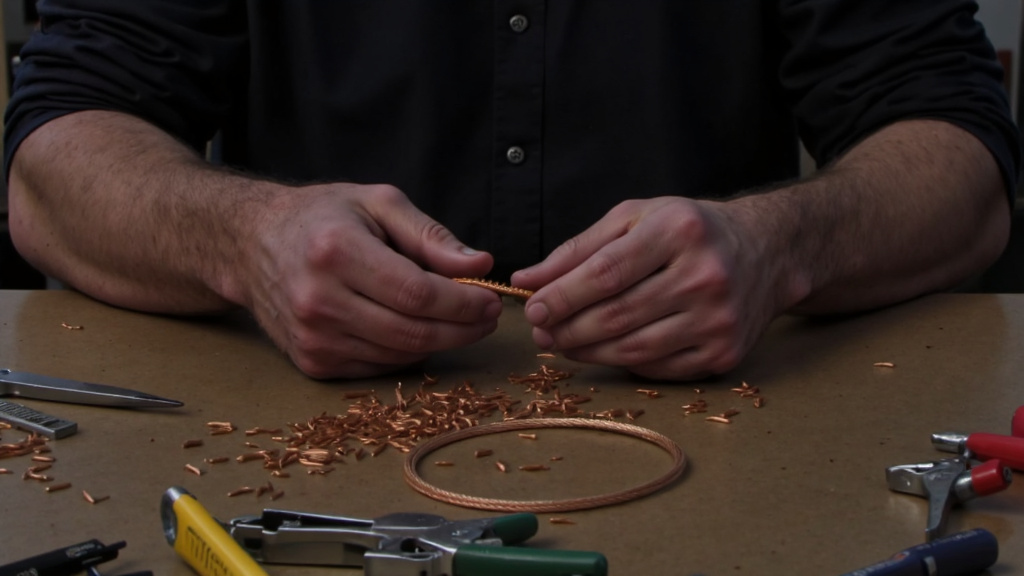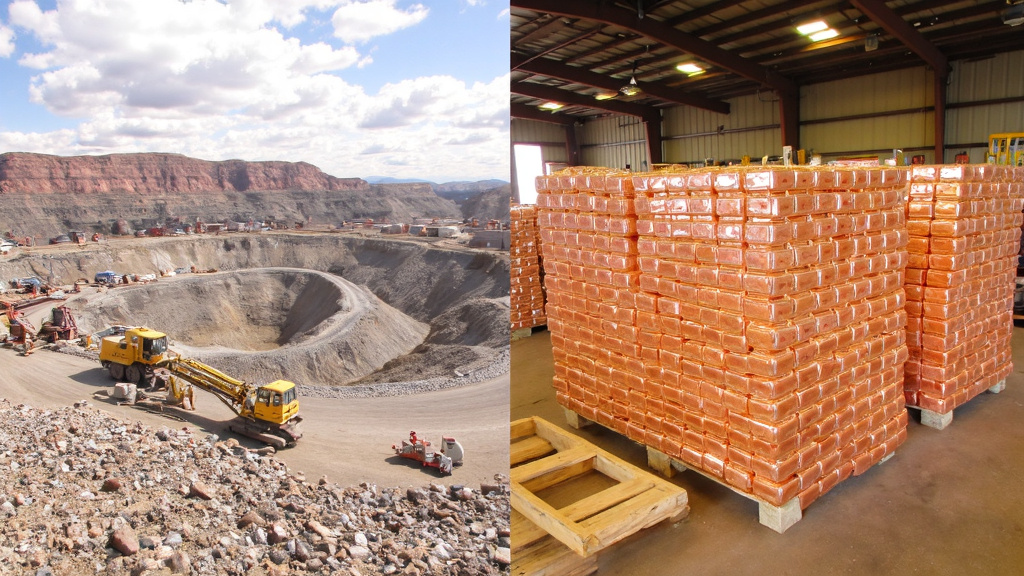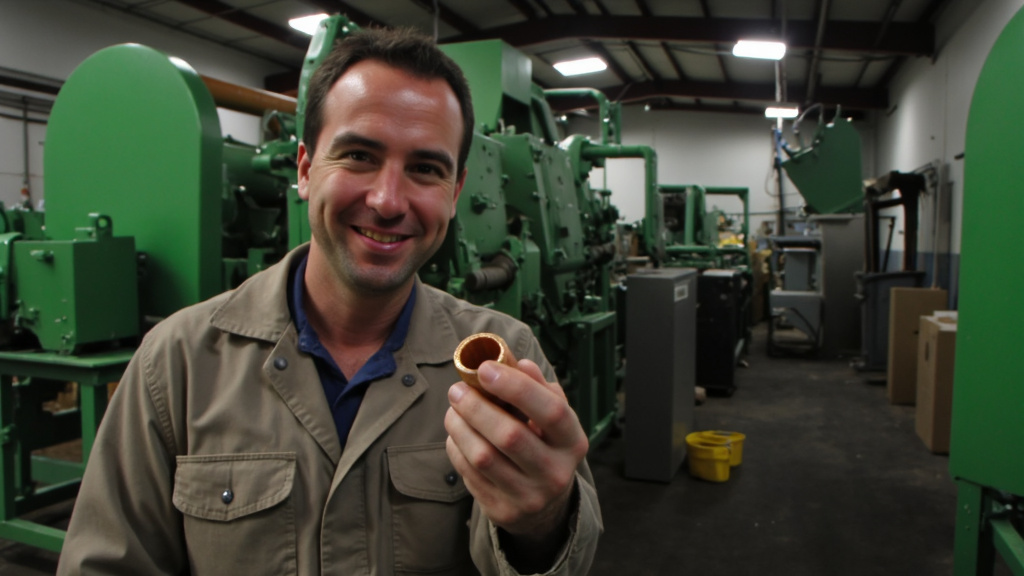5901 Botham Jean Blvd, Dallas, TX 75215
How to Recycle Copper Pipes: A Quick Overview
May 7, 2025Copper pipes are among the most valuable materials in the recycling stream today. Their complete recyclability makes them ideal for responsible waste management. Recycling copper pipes contributes to preserving our planet’s limited natural resources.
The environmental benefits go beyond conservation. Recycling copper uses significantly less energy than mining and processing new copper ore, leading to reduced carbon emissions and a smaller environmental footprint. Additionally, copper consistently ranks among the highest-value recyclable metals, providing a strong financial incentive.
For homeowners, contractors, and demolition specialists, knowing the proper methods for recycling copper pipes ensures both environmental responsibility and maximum economic return. This guide offers practical information on preparing, sorting, and delivering copper pipes to recycling facilities for optimal results.
What Are the Types of Copper Recycling?

Copper recycling falls into two categories: primary and secondary recycling. Both methods play crucial roles in conserving resources.
Primary Copper Recycling
Primary copper recycling involves processing newly mined copper and the initial scrap from production. This starts with extracting copper-bearing ores through surface or underground mining.
After extraction, the copper undergoes smelting to separate the metal. The material is then refined to achieve approximately 99.9 percent purity, resulting in copper cathode.
Primary recycling addresses waste from mining operations, minimizing resource loss during extraction and processing.
Secondary Copper Recycling
Secondary copper recycling recovers copper from products that have reached the end of their life, such as old wiring, pipes, and electronic components.
The process starts with collecting and sorting copper-containing materials. Scrap dealers and recycling facilities separate pure copper from items with compounds or alloys.
The collected scrap is cleaned and processed to remove contaminants before being melted into a molten state and formed into new products.
Secondary copper maintains the same quality and conductivity as primary copper, showing no degradation.
| Aspect | Primary Copper Recycling | Secondary Copper Recycling |
|---|---|---|
| Source Material | Newly mined copper and initial scrap | End-of-life products |
| Purity Level | Refined to approximately 99.9% | Can achieve high purity under the right conditions |
| Environmental Impact | Higher due to mining | Significantly lower, 1/8 of primary production |
| Energy Requirement | Higher energy consumption | 80-90% less energy required |
| CO2 Emissions | Higher CO2 emissions | Significantly reduced emissions |
| Quality of Output | High-quality, same as newly mined copper | Equivalent to primary copper |
The Copper Recycling Process
Both primary and secondary recycling involve similar technical procedures after collection, such as sorting, shredding, and melting.
Modern facilities use specialized equipment to separate copper from other materials, employing techniques like magnetic separation and density sorting to ensure high purity.
The copper is melted in furnaces at temperatures over 1,980°F (1,085°C) and cast into various forms for manufacturing.
This recycling loop significantly reduces energy consumption, requiring up to 85% less energy than new copper extraction.
Environmental and Economic Impact
Secondary copper recycling offers substantial environmental benefits by reducing the need for new mining, which can disrupt ecosystems.
Economically, copper’s high value makes recycling attractive. The global industry processes millions of tons annually, with secondary sources providing about 30 percent of the world’s supply.
The circular nature of copper recycling contributes to sustainability. Copper can be recycled repeatedly without losing its properties, staying in productive use for generations.
This recycling potential makes copper essential in the developing circular economy, where products maintain value through reuse and reprocessing instead of disposal.
How Do You Prepare Copper Pipes for Recycling?

Proper preparation is crucial for efficient copper pipe recycling. Clean, well-sorted copper commands premium prices at recycling facilities. By following these steps, you can maximize the value of your scrap copper while contributing to sustainable recycling practices.
Sorting and Identifying Your Copper
Begin by separating copper pipes from other metals and materials. Copper pipes typically fall into two categories: #1 copper (clean, unalloyed) and #2 copper (with minor contaminants). Proper sorting ensures you receive the best possible price for each type.
Examine your pipes to verify they are made entirely of copper and not composite materials. Pure copper pipes have a distinctive reddish-brown color and are non-magnetic. Ensure the pipes are not heavily corroded, as extensive corrosion may reduce their recyclability.
Removing Fittings and Non-Copper Components
Use appropriate tools like pipe cutters or wrenches to remove any brass fittings, connectors, or valves attached to your copper pipes. These non-copper components lower the overall grade and value when recycling. Cut off any soldered joints, as solder contains other metals that contaminate the pure copper.
For copper pipes with insulation, carefully strip away all insulation materials. Remove any plastic or rubber components that might be attached to the pipes. This step is essential for upgrading your copper from #2 to the more valuable #1 category.
Cleaning the Copper
Thorough cleaning substantially increases your copper’s recyclable value. Use a wire brush or paint scraper to remove any paint, protective coatings, or corrosion from the pipe surface. For stubborn dirt or grease, wipe the pipes with a cloth dampened with mild soap and water.
Avoid burning wire insulation or using chemicals that might damage the copper surface. These practices are environmentally harmful and can reduce the quality of your recyclable copper. Clean copper with minimal contaminants fetches higher prices because it requires less processing at recycling facilities.
| Grade | Purity | Main Uses |
| Grade 1 (A) | 99.99% | Electrical and electronic industries |
| Grade 2 (B) | 99.99% | Products requiring intricate shaping |
| Grade 3 (C) | 97% | Generalized products |
| Grade 4 (D) | 95% | Commercial product manufacturing |
Preparing for Transport
After cleaning, cut your copper pipes into manageable lengths for easier handling and transport. This also helps recycling facilities process the material more efficiently. Sort your prepared copper by grade and bundle similar pieces together using strong wire or straps.
Store your bundled copper in a dry, secure area before transport to prevent oxidation that could lower its value. When loading for transport, distribute the weight evenly in your vehicle and secure the load properly to prevent shifting during transit.
Finding a Reputable Recycling Facility
Research recycling centers in your area that specialize in metal recycling. Different facilities may offer varying prices, so comparing rates can maximize your return. Some recycling centers provide pickup services for larger quantities of copper, which can be more convenient for substantial recycling projects.
Before transporting your copper, contact the recycling center to understand their specific requirements and current pricing. Bringing well-prepared copper pipes demonstrates your commitment to quality recycling and often results in more favorable rates.
Where Can You Recycle Copper Pipes?
Copper pipes require specialized facilities for proper recycling. The main places that accept copper pipes include dedicated scrap yards and recycling centers that specialize in metal processing. These facilities have the necessary equipment to efficiently melt and refine copper materials, ensuring the metal returns to the manufacturing stream.
Okon Recycling is easily the best option for recycling copper pipes. Our facilities specifically deal with metal materials and typically offer competitive rates based on current market prices. Besides, we also have the capacity to handle larger quantities of copper, making us ideal for contractors or those with substantial amounts of scrap.
Local recycling centers represent another viable option for copper pipe recycling. Many municipalities operate recycling facilities that accept various metals, including copper. These centers often have designated drop-off points specifically for metal materials.
Before transporting your copper pipes to any facility, it’s essential to call ahead and verify their acceptance policies. Many facilities have specific requirements regarding how copper should be prepared before drop-off. Some may require copper to be sorted by grade or cleaned of attachments and contaminants. Others might have designated days or hours for accepting different types of materials.
Community Recycling Programs
Some communities offer special recycling events or programs specifically for metal and electronic waste. These events might be held seasonally and provide residents with convenient opportunities to recycle copper and other valuable metals without traveling to a dedicated facility.
For smaller amounts of copper pipes, check if your curbside recycling program accepts metal materials. While many municipal programs don’t accept copper through regular pickup, some more comprehensive programs might accommodate it with special arrangements or scheduled pickups.
Environmental Benefits of Proper Copper Recycling
Choosing the right recycling facility ensures that your copper pipes are processed responsibly. Proper copper recycling conserves natural resources, reduces mining impacts, and requires significantly less energy than producing new copper from ore. In fact, recycling copper uses approximately 85% less energy than mining and refining new copper.
By recycling a single ton of copper, we can save up to 40 million BTUs of energy and reduce carbon emissions. The environmental benefits multiply when copper is recycled through proper channels rather than disposed of in landfills where it cannot be recovered.
Responsible recycling also prevents potentially harmful materials from entering landfills. When copper and other metals degrade in landfill environments, they can potentially leach into soil and groundwater, causing environmental contamination.
What Are the Benefits of Recycling Copper Pipes?

Recycling copper pipes provides significant environmental benefits and impressive economic returns. The process greatly reduces our reliance on copper mining, one of the most environmentally disruptive industries globally.
Energy Conservation
A major benefit of recycling copper is energy conservation. Recycling copper pipes uses up to 85-90% less energy than extracting and refining new copper from ore, which directly reduces greenhouse gas emissions.
Recycling bypasses energy-intensive mining operations that consume about 30 million megawatt-hours of electricity annually worldwide. The energy saved can power millions of homes and significantly reduce industrial carbon footprints.
Resource Preservation
At current consumption rates, experts predict that economically viable copper reserves could be exhausted within 50-60 years. Recycling copper pipes helps extend the lifespan of existing copper supplies, ensuring future generations can access this versatile metal.
Mining operations typically cause environmental damage, including landscape scarring, ecosystem disruption, and water contamination. Every ton of recycled copper eliminates the need to mine about 3.2 tons of raw ore, preventing further destruction of natural habitats.
Economic Value
Copper recycling offers substantial economic benefits. Clean copper pipes without contaminants (#1 copper) typically fetch between $3.50 and $3.80 per pound, while pipes with minor contaminants (#2 copper) command prices between $3.30 and $3.60 per pound.
For manufacturers, using recycled copper can reduce expenses by 20-50% due to lower processing costs. Copper retains 100% of its properties during recycling, making recycled copper as valuable as newly mined copper.
Waste Reduction
Recycling copper pipes prevents them from ending up in landfills, preserving valuable space and preventing potential soil and water contamination. Disposed improperly, copper pipes can release harmful substances into the environment.
The recycling process turns potential waste into a valuable commodity. Every pound of recycled copper represents material kept out of the waste stream and returned to productive use.
Job Creation
The metal recycling industry supports over 1.5 million jobs worldwide. Unlike mining, often controlled by large corporations, copper recycling creates opportunities for local businesses and skilled workers.
These jobs span collection, sorting, processing, and manufacturing sectors, contributing to local economies and supporting environmental sustainability goals.
Price Stability
Recycled copper offers more stable pricing than newly mined copper, which experiences significant market volatility. This stability helps manufacturers better predict costs and manage expenses. For industries like construction, automotive, and electronics, this predictability is valuable.
By diversifying supply chains to include recycled and newly mined copper, markets become more resilient to supply disruptions.
When copper pipes reach the end of their useful life, recycling isn’t just an environmentally responsible choice—it’s also economically advantageous. It conserves energy, preserves resources, reduces waste, creates jobs, and yields valuable materials that retain all their original properties.
Conclusion: Embracing Copper Pipe Recycling for a Sustainable Future

Recycling copper pipes offers a significant opportunity to support environmental conservation while potentially providing financial returns. By properly preparing, sorting, and delivering these materials to reputable recycling centers, they can remain in use indefinitely without losing their quality or performance. This process not only reduces the need for environmentally harmful mining but also conserves energy, as copper recycling requires up to 90% less energy than processing new materials.
Whether renovating your home, managing a construction project, or collecting scrap metal, responsible copper pipe recycling makes a tangible impact on resource management and sustainability.
For expert assistance with your recycling needs, contact Okon Recycling at 214-717-4083. Our professional team can help ensure your copper pipes and other valuable materials are recycled efficiently, maximizing both environmental benefits and potential returns.
